There are some who just love flight. The ones that I’m thinking about have the longest wingspans in the animal kingdom, and they are masters at using them efficiently. They can fly 50 miles per hour. They go years without touching land; in fact, most of their time is spent up in the clouds.
And they’re among the world’s most endangered birds.
They are albatrosses.
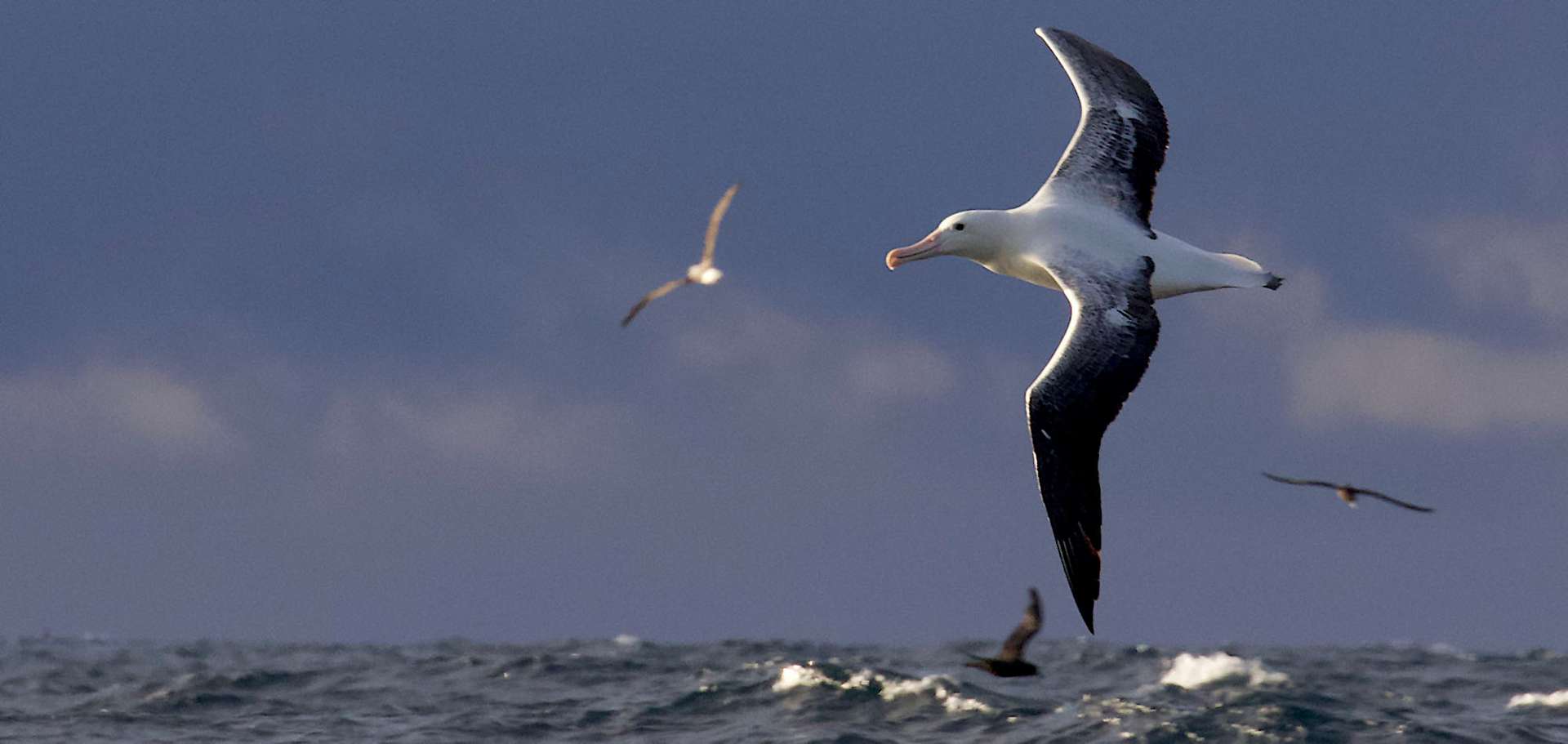
Albatrosses are made for gliding. In fact, this royal albatross is so well designed that when in the air, it can glide an impressive 72 to 75 feet for every foot of altitude it loses in the process. ©Gregory “Slobirdr” Smith, flickr
Legendary birds
Albatrosses are among the world’s largest seabirds. Royal and wandering albatrosses, known as the “great albatrosses,” have the widest wingspans—10 feet or more—of any living bird. The length of their wings is also impressive; the longest recorded was almost 13 feet.
Flapping such massive wings takes a lot of effort, so albatrosses have become masters of soaring flight. They’re able to glide over vast tracts of ocean without beating their wings. So fully have they adapted to their oceanic existence that they spend the first six or more years of their long lives (which last 50 years or more) without ever touching the ground. Most live in the Southern Hemisphere, with the exceptions of the black-footed albatross of the Hawaiian archipelago and a few nearby islands; the Laysan albatross of the North Pacific; the short-tailed albatross, which breeds near Japan; and the waved albatross of the Galapagos Islands.
Big wings are also useful when traveling for incredible distances. Individuals of some species of albatrosses circumnavigate the globe, covering 500 miles a day at sustained speeds of 50 miles per hour. Wandering albatrosses have been known to fly 74,500 miles across the Antarctic Ocean in a single year.
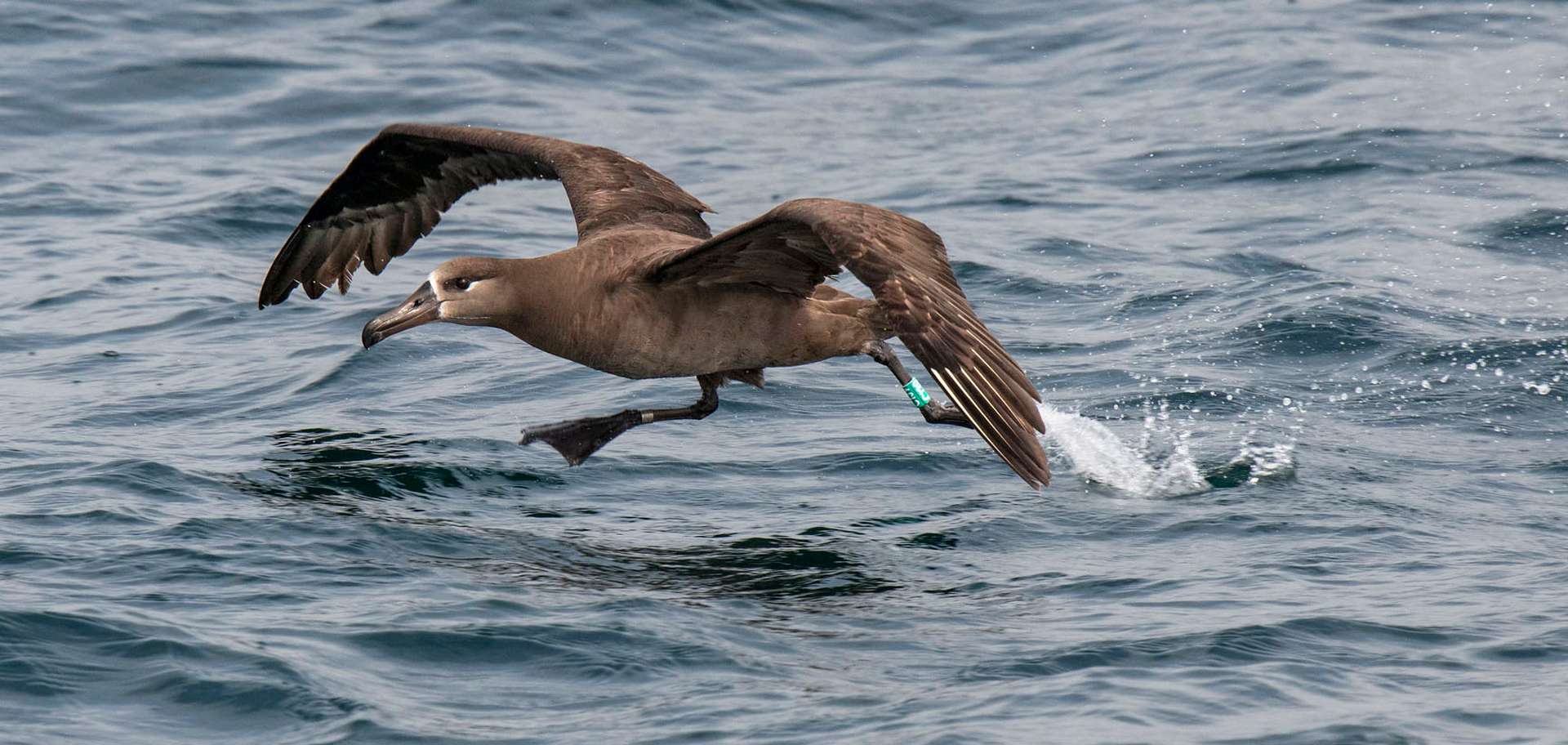
Restricted to the North Pacific, the black-footed albatross is the only albatross seen commonly off the North American coastline. Its closest nesting colonies are in Hawaii. The bird has a keen sense of smell, which it uses to locate food across vast expanses of ocean. ©Monterey Bay National Marine Sanctuaries, flickr
And then, they somehow find their way home—even when home is an outpost in the ocean, not much bigger than an aircraft carrier. At the start of their breeding season, albatrosses have been tracked making almost ruler-straight trips from distant foraging areas to their nests. Because the birds maintain their course day and night, in cloudy weather and clear, scientists believe they use a sort of magnetic reckoning to fix their position relative to the Earth’s magnetic field.
In another extraordinary feat, the birds seem able to predict the weather. Buller’s albatrosses were found to fly northwest if a low-pressure system, which produces westerly winds, was imminent; and northeast if an easterly wind-producing, high-pressure system prevailed. The birds typically chose their direction 24 hours prior to the arrival of the system, suggesting they can respond to barometric cues.
It’s no wonder that these birds inspire legends, such as that they are the souls of drowned sailors, the harbingers of fair breezes or the metaphor for penance in Samuel Taylor Coleridge’s The Rime of the Ancient Mariner, first published in 1798. Coleridge writes: “Ah! well a-day! what evil looks/Had I from old and young!/Instead of the cross, the Albatross/About my neck was hung.”
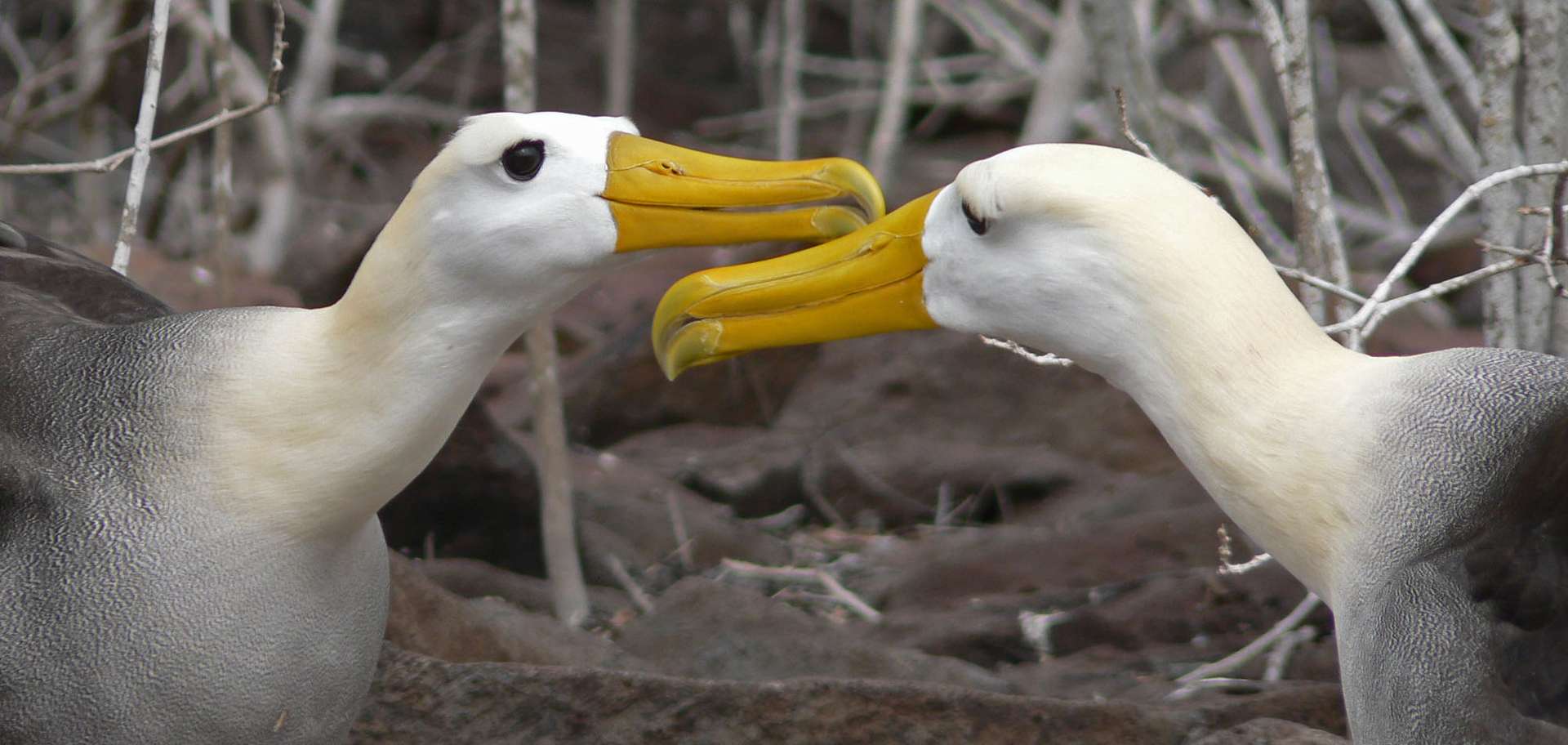
Because choosing a partner is such a momentous decision for albatrosses, they need a good system for identifying top candidates. They court each other with elaborate mating dances that develop over time and eventually become unique to each pair. ©James Preston, flickr
In his 1851 book Moby-Dick, Herman Melville wrote about a wandering albatross as a “regal, feathery thing of unspotted whiteness” that, at intervals, “arched forth its vast archangel wings, as if to embrace some holy ark.”
Determined birds
Although albatrosses are affecting and beautiful, almost everything about their lives is difficult, including eking out an existence in their harsh environments. Unlike penguins, which can dive to great depths and hunt for extended periods underwater, albatrosses are able to plunge into only the top few feet of the ocean for fish and squid. The lengthy albatross “chickhood” (royal albatross chicks are nest-bound for nine months) is an adaptation to a scarce food supply: a slow-maturing chick needs food less often than a fast-maturing one. Similarly, a prolonged adolescence—around 12 years in wandering albatrosses—is an extended education period during which the birds explore the oceans, learning where and when to find food.
A chick’s nutritional needs cannot be met by a single parent. Mate selection, therefore, is a critical decision and is all about choosing a partner that can bring home the squid. The search for a partner takes several years. It begins when adolescent birds are in their second year ashore, at about age eight. They spend time with potential mates in groups known as gams. In their third year ashore, males stake a claim to a nest site and females shop around, inspecting the various territory-holding males. Females do the choosing, and their main criterion seems to be the number of days a male can spend ashore—presumably a sign of foraging ability.
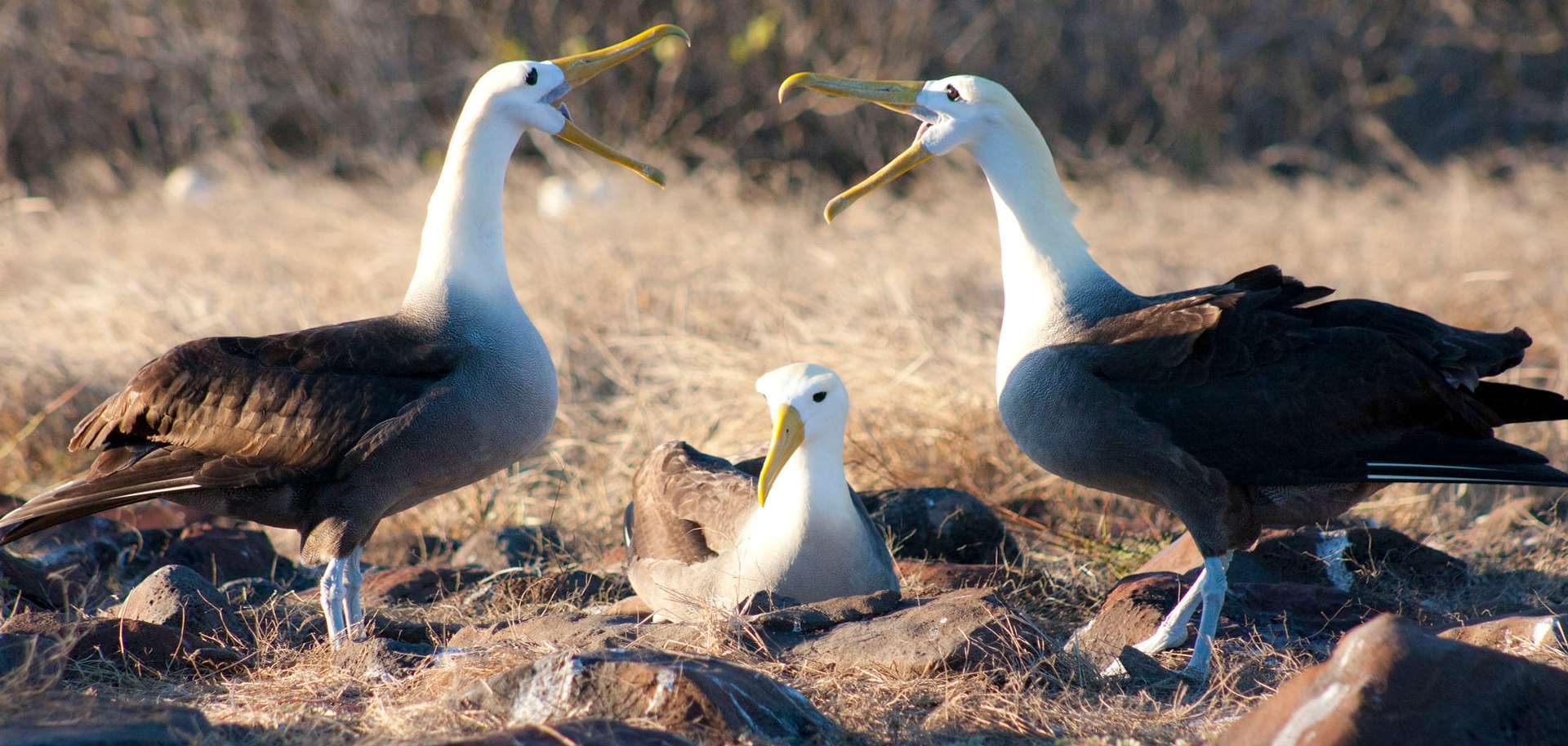
Albatrosses lay only a single egg at a time and usually only once every two years. Both parents incubate the eggs—a process that takes longer than for any other bird. And once the chick hatches, the parents spend several more months on land, tending to their offspring before all three of them head out to sea. ©The TerraMar Project, flickr
Pairs finally form in the fourth year ashore. Albatrosses are extremely faithful; in Buller’s albatrosses, only 4 percent will choose new partners. In the fifth year, a pair may make its first breeding attempt. Breeding is a two-stage process. Females need to reach a sufficiently fat state to trigger the urge to breed and return to the colony. When they are back, the local food supply comes into play, determining whether an egg is produced.
The breeding pair returns to the same nest year after year, adding a fresh layer of peat and vegetation until the pedestal becomes as tall as a top hat; although providing meals for chicks is so demanding that parents usually take a year off before breeding again.
Threatened birds
Because it takes so long for the birds to produce a chick, albatross populations are very vulnerable to threats on their breeding islands. Introduced predators, such as feral cats and rodents, pose a danger, especially to defenseless chicks that are left alone for long periods while their parents shuttle back and forth from distant feeding grounds. In one of the most extreme examples of seabird predation, mice on Gough Island in the South Atlantic are decimating the populations of albatrosses that breed there, killing an estimated 1,000 Tristan albatross chicks a year.
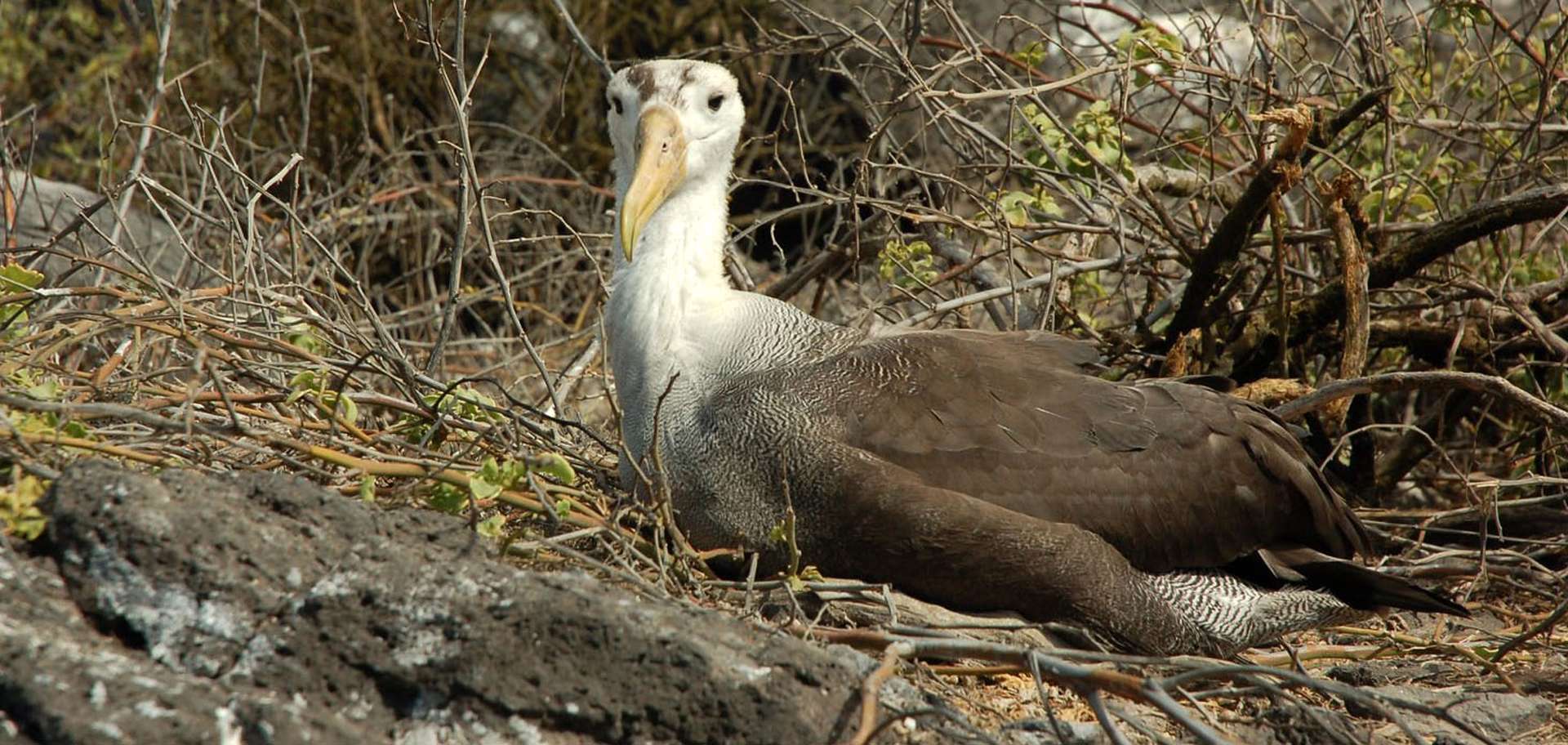
The greatest threat to waved albatrosses in the Galapagos Islands comes from our fishing activities. Longline fishing boats lay out hundreds of miles of baited hooks which attract birds, who get hooked and drown after being dragged under. While longlining is banned within the Galapagos Marine Reserve, once the birds leave this area, they have no protection. ©Spencer Thomas, flickr
Natural disasters also cause heavy losses. In 1985, storm surges washed over two royal albatross breeding islands in the Chatham Islands, an archipelago in the Pacific Ocean about 430 nautical miles east of New Zealand’s South Island. The storms killed chicks and removed much of the islands’ scant soil and vegetation. With the albatrosses lacking nesting material in subsequent years, the breeding success rate dropped from 50 percent to 3 percent. The birds had to lay their eggs on bare rock, and most were broken during incubation.
Yet the most injurious threats to albatrosses today are not to chicks but to adult birds. Along with other seabirds, they compete with humankind for the food resources of the sea—and the birds are losing. Along with the efficiency of modern fishing practices, fishing equipment—hooks, nets and trawl wires—are inflicting a heavy toll. Trawl fisheries use giant, sock-shaped nets towed at depths of a quarter mile to capture 40 tons of fish in a single haul. Albatrosses and other large, soaring birds tend to die in collisions with the nets and wires; while smaller, more agile fliers, such as petrels and shearwaters, are more likely to get ensnared in the nets and be crushed or drowned while feeding.
Thankfully, many New Zealand fishers have adopted ingenious methods to reduce harming and killing seabirds—or attracting them to boats in the first place. Too, there is some evidence to suggest that fisheries may benefit albatross populations by providing a ready supply of discarded fish that reduces competition for food between and within albatross species and provides an alternative food source to predatory birds, such as skua, which often attack albatross chicks.
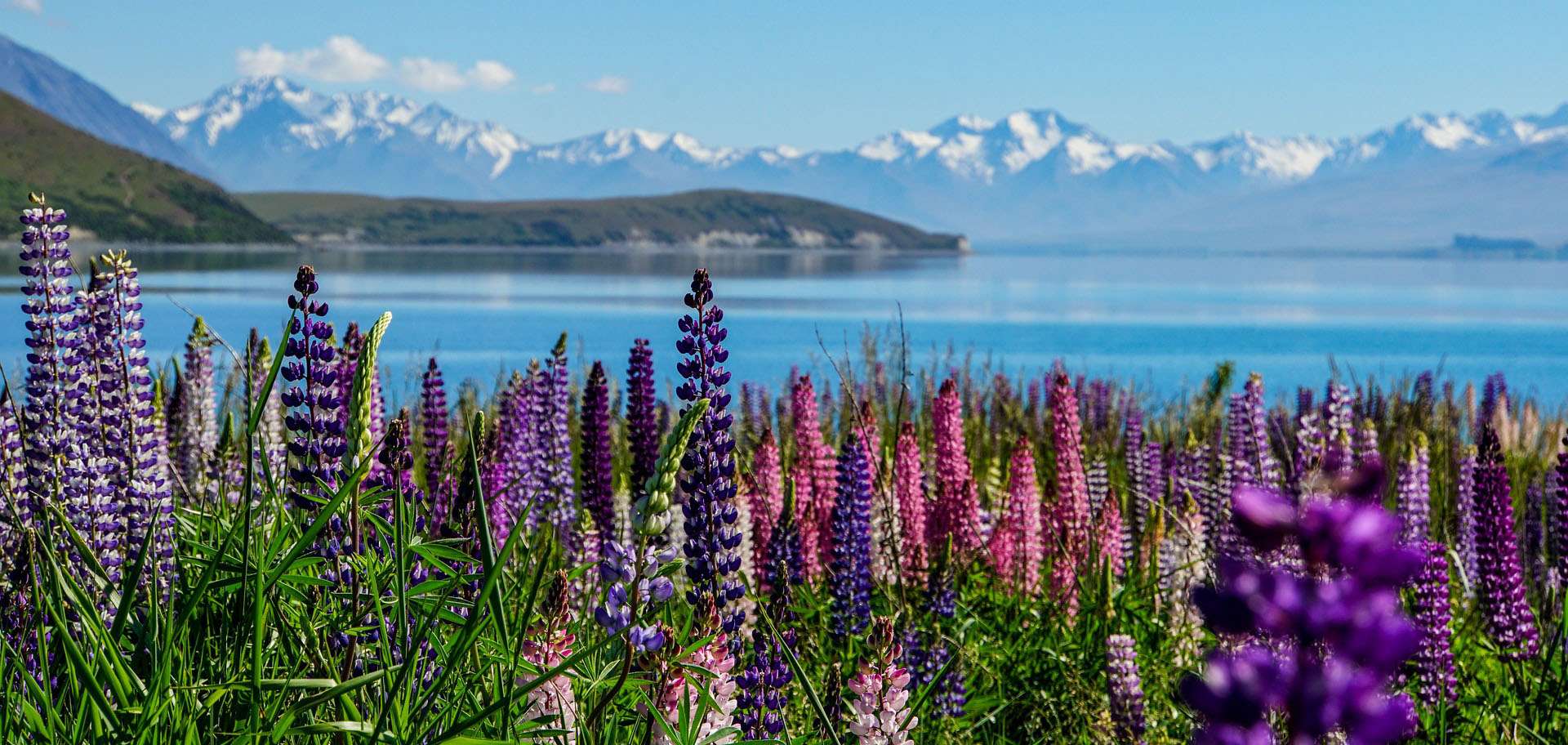
Divided by the backbone of mountain ranges aptly called the Southern Alps, New Zealand’s South Island is renowned for its spectacular golden-sand beaches, large beech forests, blue fjords, accessible glaciers, clear lakes, broad plains and snow-topped peaks.
However, in albatrosses—long-lived, slow-maturing birds that produce a single chick every one to two years—the long-term negative impact of adult death far outweighs the short-term benefit of chick survival. It may take three, four or even five successful chick rearings to compensate for the death of just one parent. Even small increases in adult mortality can wipe out the benefit of tons of discarded fish fed to chicks. More work needs to be done to compare the benefits of chick survival with the costs of adult deaths from fishing vessels.
Taiaroa Head Nature Reserve birds
One albatross population that has benefited from human help is the colony of endangered northern royal albatrosses at Taiaroa Head Nature Reserve, near the city of Dunedin, on New Zealand’s South Island. Taiaroa Head is one of the only places in the world where a visitor can get close to the birds. The colony is tiny, with only 140 individuals, so the nature reserve uses some clever techniques to maximize reproductive success.
For example, if a bird has been sitting on an egg for 10 days and has not been relieved by its partner, the egg is put in an incubator and the bird is given a fiberglass replica to sit on. If the partner hasn’t returned by day 15, Taiaroa Head rangers will start to supplementary feed the sitting bird, giving it salmon smolts. They prefer, however, not to interfere. It could simply be that the partner has hit a patch of calm weather somewhere and is struggling to get back. But at day 20, when it’s clear that the partner isn’t coming back—a chick with only one parent won’t survive—the fiberglass egg is taken away, and the bird figures out that breeding for that year is over.
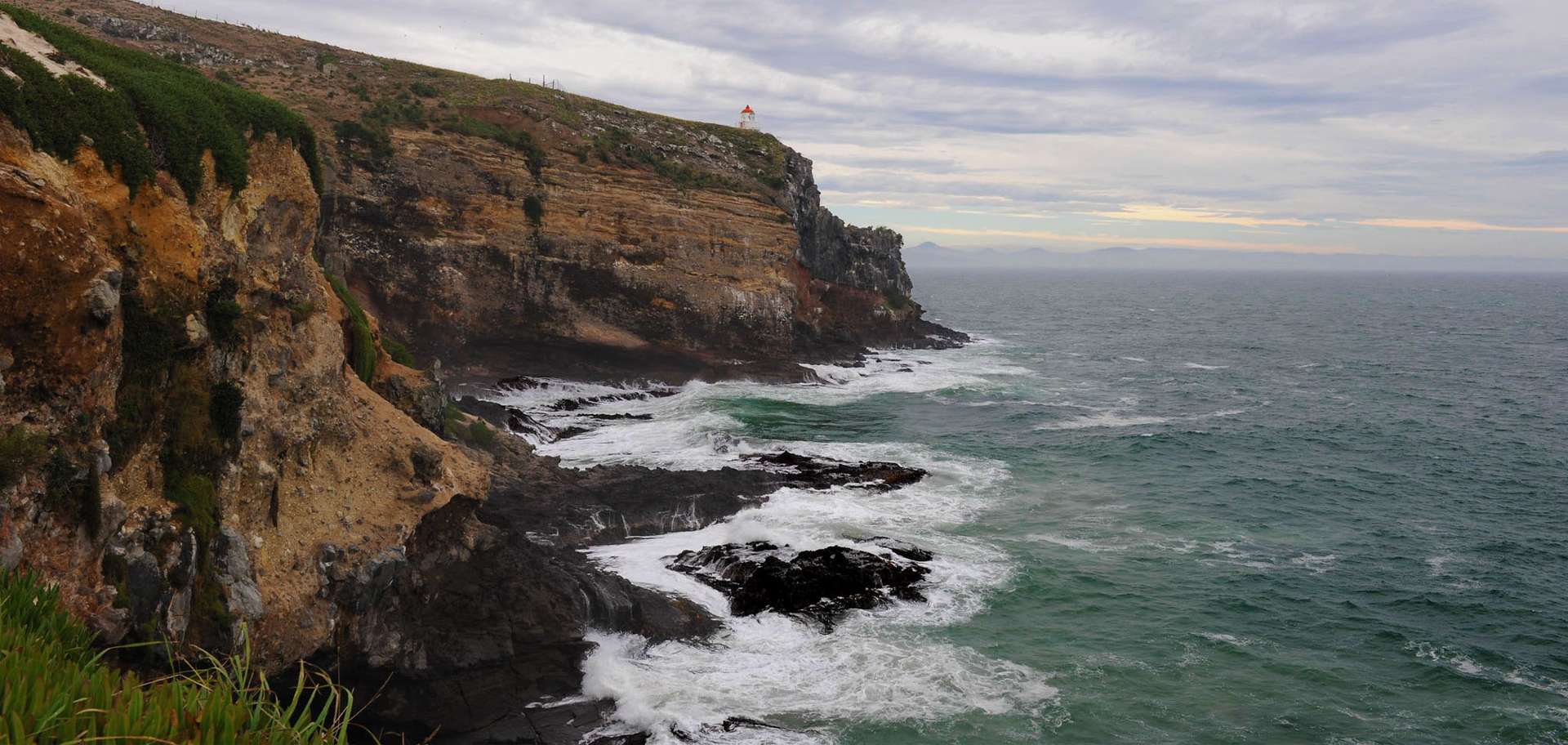
Taiaroa Head is a headland at the end of the Otago Peninsula in New Zealand, overlooking the mouth of the Otago Harbor. Rangers at the Taiaroa Head Nature Reserve take good care of the albatrosses found here, even turning on sprinklers during hot, still days so that the adult birds won’t succumb to heat exhaustion. ©John Benwell, flickr
An egg is also taken away from first-time breeders, since they tend to be clumsy with their big, webbed feet and are likely to break an egg. The egg is either given to a pair that’s sitting on a broken or infertile egg, or it’s kept in an incubator until it hatches. Breeding success at Taiaroa Head is 72 percent, compared with an estimated 33 percent had humans not assisted.
Video birds
Watch the video below from the Cornell Lab of Ornithology. It captures a 220-day-old royal albatross chick that became the first nestling to fledge from New Zealand’s Taiaroa Head Nature Reserve in 2022.
You’ll see the chick perk up as southwesterly winds blow at high speeds across the Otago Peninsula. She opens her wings, and the wind takes her down the headland and towards the open ocean, where she’ll spend the next several years before returning home to find a mate.
Immediately after fledging, chicks usually fly a few miles before landing and then beginning their lives on the ocean. In the second video, below, you can see what the chick can expect next in its life cycle.
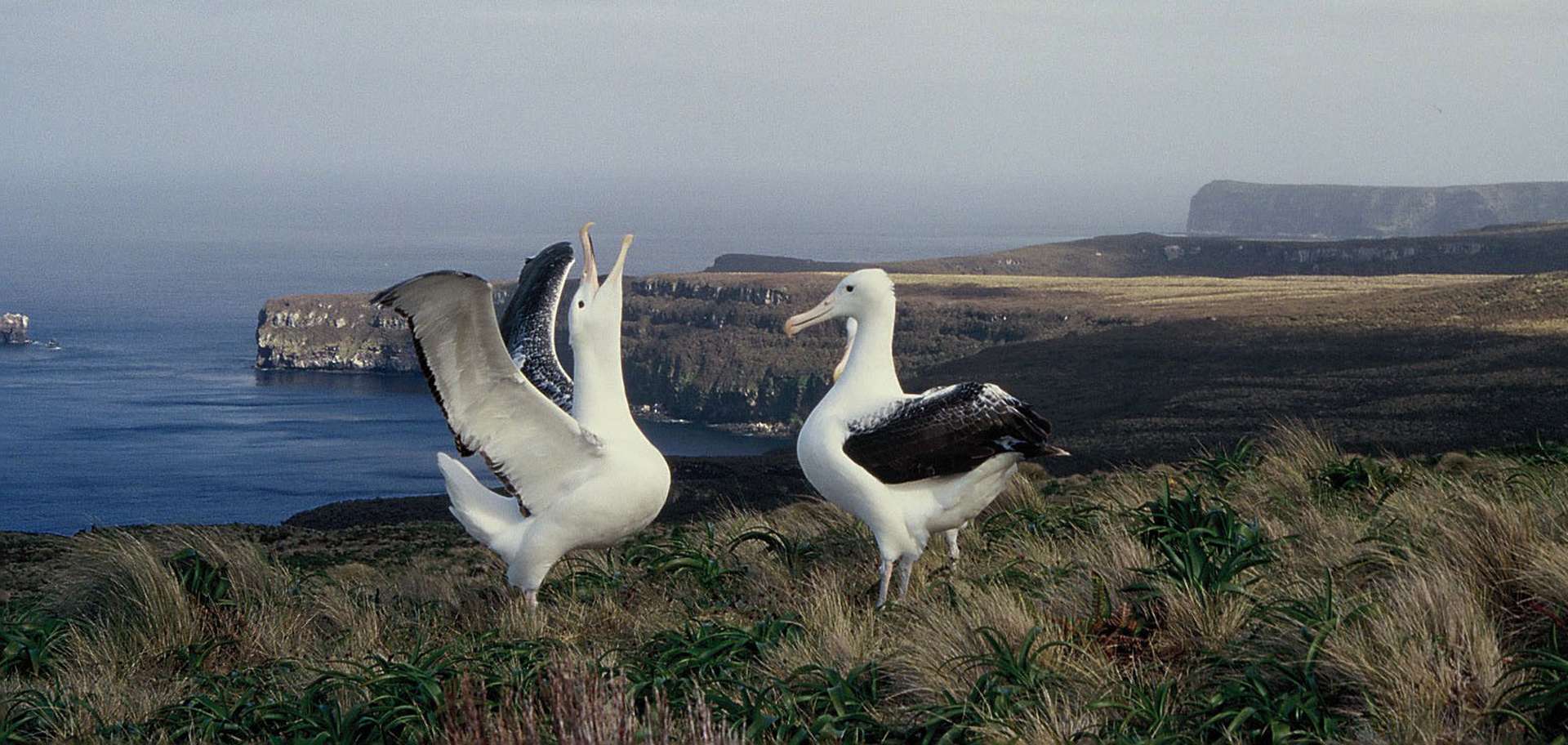
Samuel Taylor Coleridge’s “Rime of the Ancient Mariner” introduced us to a legendary bird. Redemption for the poem’s mariner comes when he embraces all life, as he says to his listener: “He prayeth well, who loveth well/Both man and bird and beast.” It is a message we still need to hear. ©Edward Abraham, flickr
Like-minded birds
Albatrosses are one of the most threatened families of birds on Earth. All but one of the 22 albatross species recognized by the International Union for Conservation of Nature are described as near threatened, vulnerable, endangered or, in the case of the Tristan and waved albatrosses, critically endangered.
Sailors have long considered it bad luck to kill an albatross. It could be because we share something in common: we both seek expanses to explore and always favorable winds.
Here’s to finding your true places and natural habitats,
Candy

